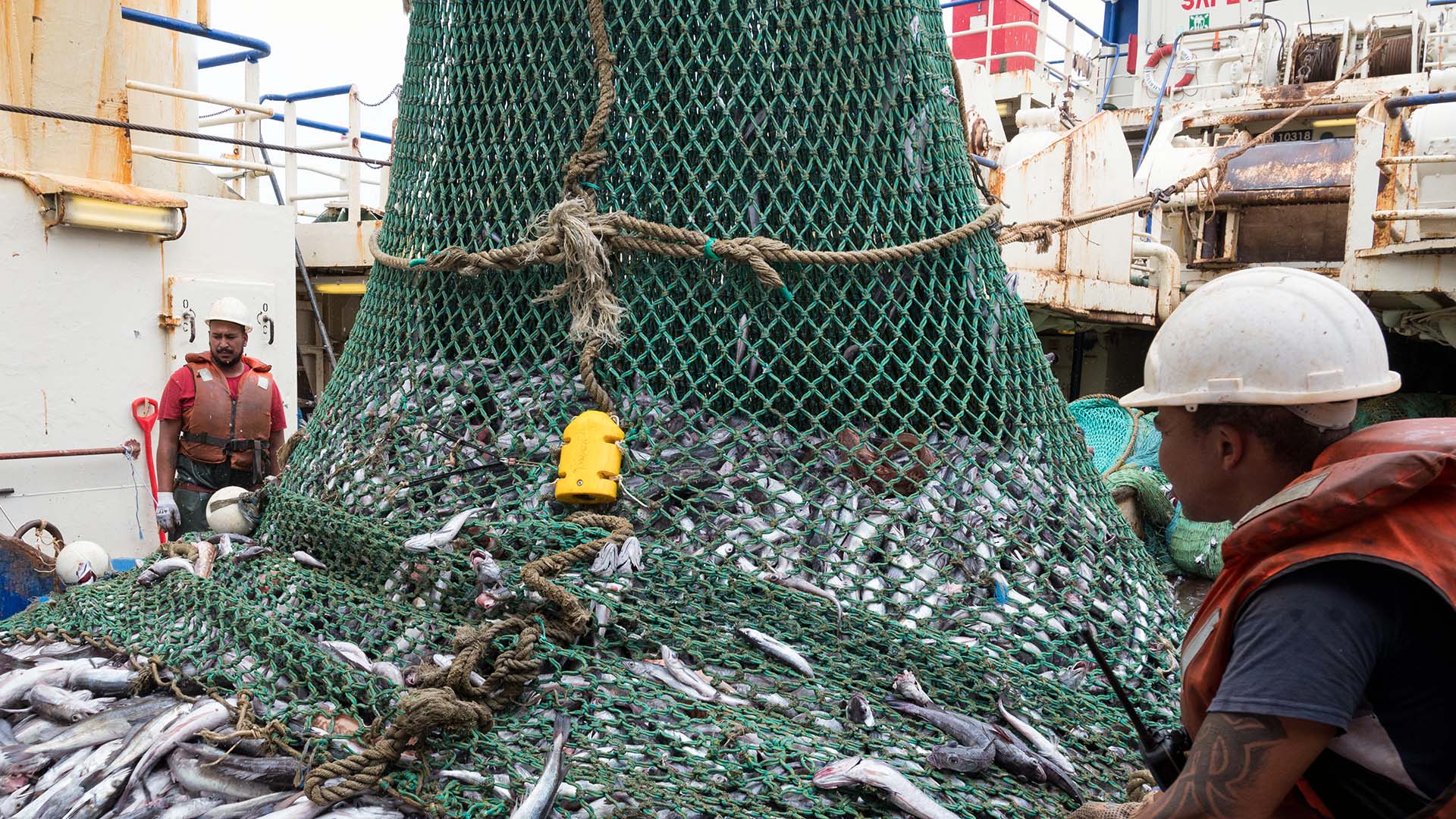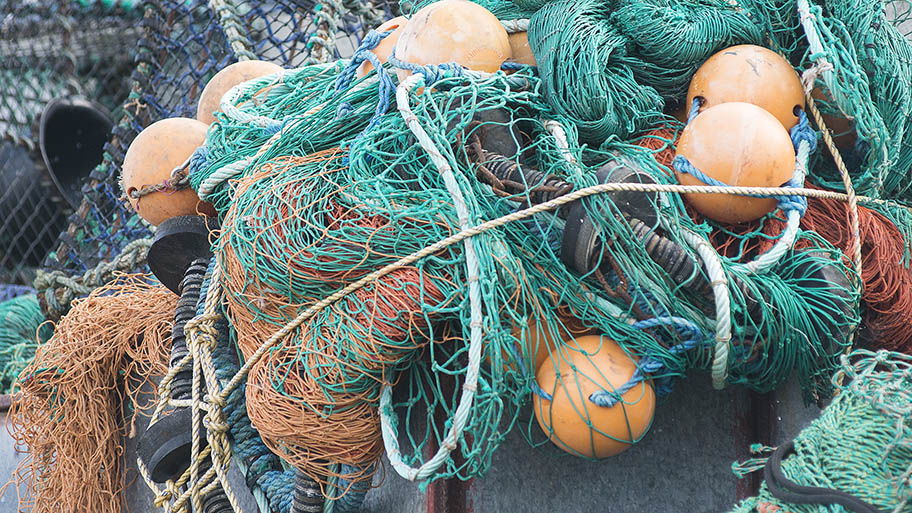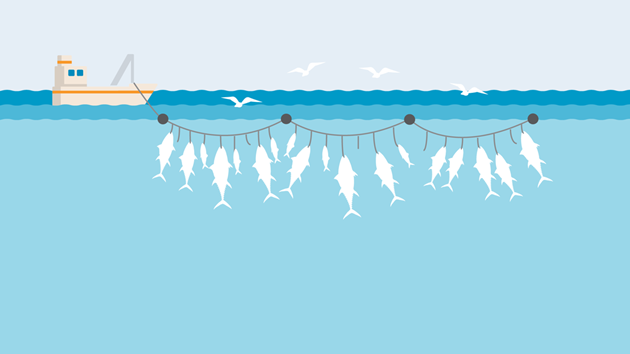Plastic pollution is a serious threat to the health of the ocean. For years, the United Nations has been working on a legally binding international agreement to end plastic pollution. Without a formal agreement, like the one being negotiated this week, plastic waste is projected to triple by 2060.
While the vast majority of plastic in the ocean comes from people's homes, lost fishing gear also contributes a significant amount.
That’s why avoiding abandoned fishing gear is an important part of sustainable fishing and why preventing the loss of fishing gear is part of the MSC standard for sustainable fishing.
Here are three MSC certified fisheries around the world that have come up with creative ways to reduce plastic pollution and ensure they don’t contribute to ghost gear.
South Africa’s hake trawl fishery gives old nets new life
South Africa’s hake trawl fishery is recycling old fishing nets in collaboration with OCEAN Action Network, Ocean Plastic Technologies, and the V&A Waterfront.
Together, these organizations are developing South Africa’s first on-site recycling facility for used fishing gear, thanks to a funding boost from the MSC’s Ocean Stewardship Fund.
Nets are sorted and processed into high-value, densified materials that can be reused in plastic manufacturing. This minimizes environmental harm from discarded gear and promotes circular economy practices and sustainable waste management.

Ecuador’s tuna fishery uses 100% biodegradable materials
An Ecuadorian tuna fishery made the switch to new 100% biodegradable FADs (fish aggregating devices) made from balsa wood, manila hemp, and bamboo. This means that if the FADs are ever lost, they’ll completely break down without harming the environment.
The fishery has also collected and recycled over 100 metric tons of fishing nets that are now being turned into skateboards, clothes, and toys by company Bureo.
They fishery also runs two projects to help remove plastic pollution from Ecuador; “Pescando plásticos" collects plastic from mangroves in the Gulf of Guayaquil, and "Caring for Galapagos" collects abandoned fishing gear from the seabed and coast around the Galapagos Islands.
-tunacons.jpeg?sfvrsn=1b7b7e09_1)
UK’s Cornish hake gill fishery turns old nets into materials for 3D printers
The UK’s Cornish hake gill net fishery has adopted an innovative approach for discarding used fishing nets, through a partnership with Fishy Filaments.
After many seasons, gillnets can start to degrade. When they eventually become unusable, the retired gillnets get transferred to Fishy Filament where they are recycled into engineering grade filament for 3D printing.
The University of Exeter conducted a study on the carbon cost of recycling the MSC Cornish hake nets into a form that is suitable for injection molding companies. The findings concluded that the process costs the planet 97-98% less CO2 than if manufacturers employed first-use nylon.

Preventing lost fishing gear helps protect marine species and important ocean habitats. When you shop for seafood, choose brands that are MSC certified to know that you’re supporting fisheries that are working hard to eliminate lost fishing gear and give plastic nets a second life.
![]()



